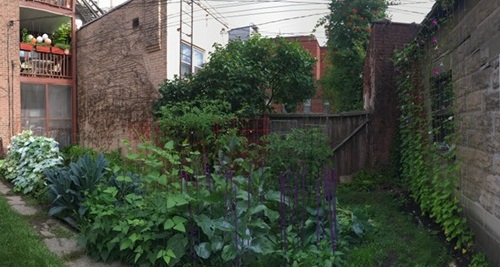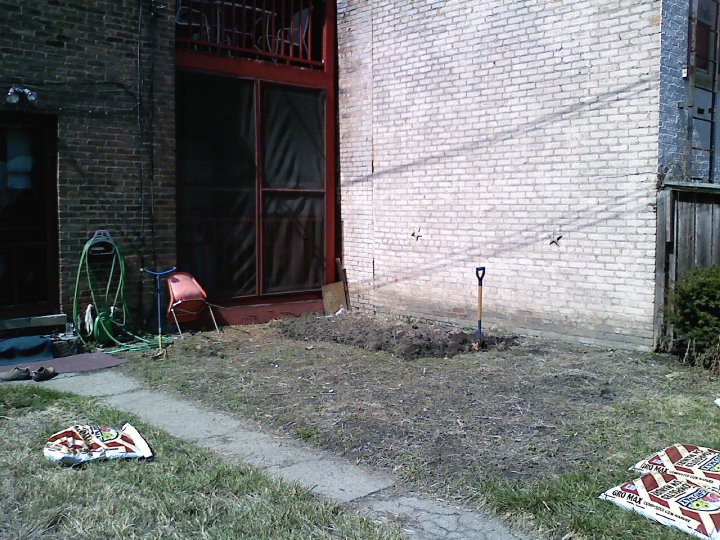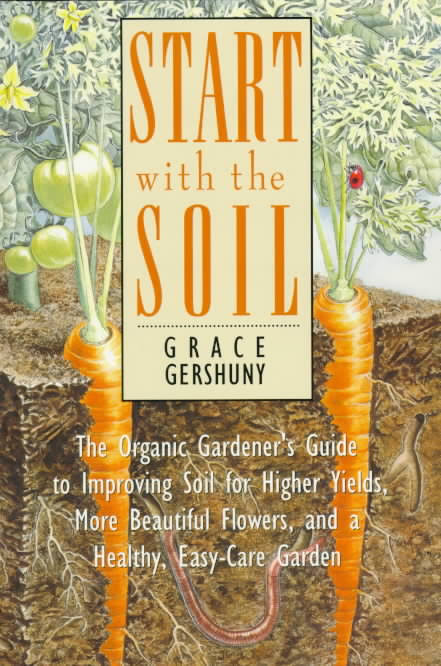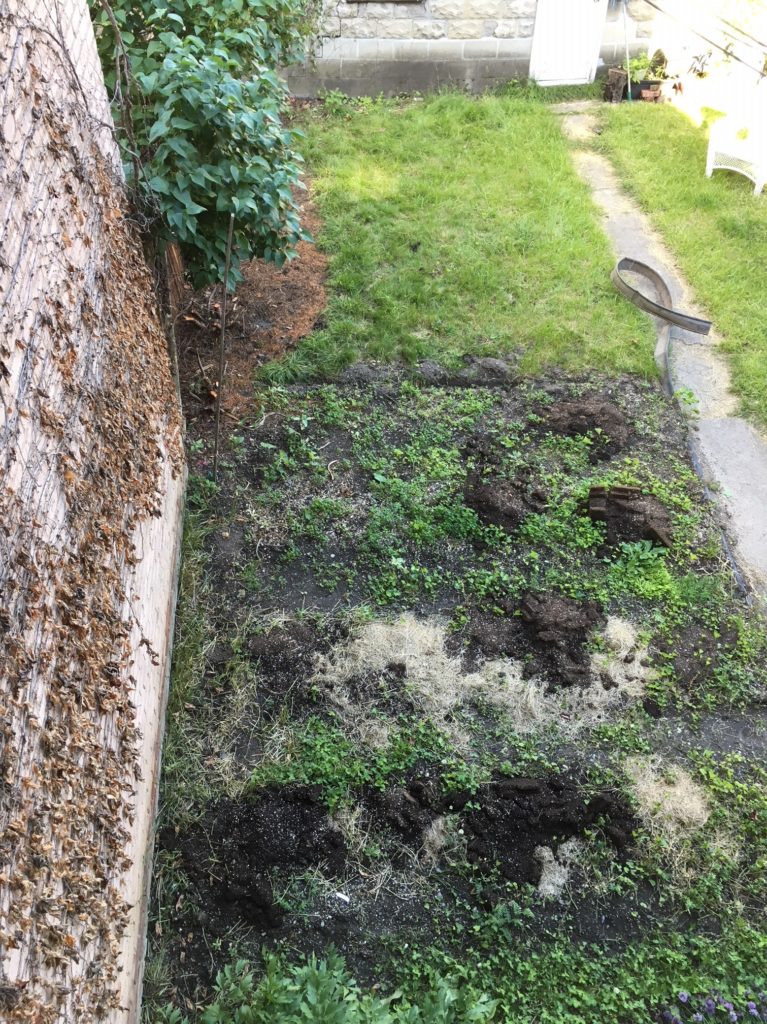
A few words about my vegetable garden. I rent an apartment in an old row house (circa 1870), three apartments on three floors. When I moved in, a quarter of the back yard was dug up for a garden and my downstairs neighbor, who has lived in the building for 20 years or so, planted a few tomato plants that turned into somewhat neglected vines. The next year, I asked her if I could plant a few things and she turned the whole enterprise over to me, saying her late husband had gardened, that she didn’t like to but felt obligated to put something in the ground. She asked only that I plant some turnips for her so that she could have the greens.
There was no way to know what had been used in soil (my neighbor handed me a jar of white powder, unlabeled, that her husband had used for something or other) or what state anything was in. The first two summers were very challenging as I had no experience at all, but I read and researched, and peppered knowledgeable people with questions.


Cucumber beetles destroyed both cukes and zucchini (I may have been the only gardener on the planet who couldn’t grow zucchini). I learned to crowd plants at my own peril, tried covering everything with weed cloth–you name it. After consulting on the beetle issue with my cousin, knowledgeable and lovely proprietor of Lacewing Fine Gardening and Botanical Design in Seattle, she recommended some books on soil, which I dutifully read. Somewhere in Start with the Soil by Grace Gershuny, the light bulb went off (W-A-T-E-R, Helen. Water!) and I really understood that the beetles weren’t the problem; the problem was that whole garden was out of balance, so that something a healthy garden would be able to fend off morphed into a significant problem. Hello, life metaphor.
I addressed the imbalance with zeal. I found a locally-made composted cow manure and applied it liberally because, you know, “organic” “compost” had to be good, and the more the better. I had my soil tested at my local Cooperative Extension and the lab results came back with the several levels through the roof, all due to my over-application of the cow manure. I wonder if anyone else has gotten a soil report with an exclamation point? Mine had three. Whoops.

And so, as with so many things, I had to recognized that it would be a process, not a quick fix (damn metaphor again!). Over the past few years, I added grew green manures of clover, rye grass, and other plants (sown underneath the veggie plants after they had gotten tall enough) that serve as weed control as well as providing valuable nutrients and biomass to the soil, being liberal with home-made compost (more on composting another time), and seeking all sorts of organic remedies. It has been several years of amending the soil and I’m awaiting new soil test results, hoping for no exclamation points this time.
Last year, with permission from my landlord and fellow building mates, I expanded the garden to double its former size. I had a row of pointless evergreen hedges removed and the rest of the garden side of the yard rototilled.


After all that, last year I got cucumbers! (and then they were wiped out by a virus) And zucchini! (that succumbed to powdery mildew in July). Let’s see what this year’s gardening season holds.
Carolyn Hauben
2 Jun 2018Maria, I love your blog. I’ll never have a garden but it is fascinating to read about your progress.
Handmade Bits and Bobs
2 Jun 2018Thank you! It’s always an adventure, that’s for sure.